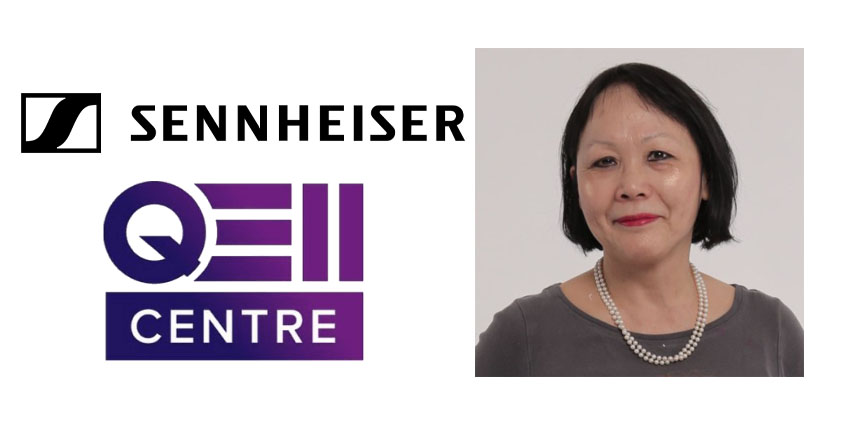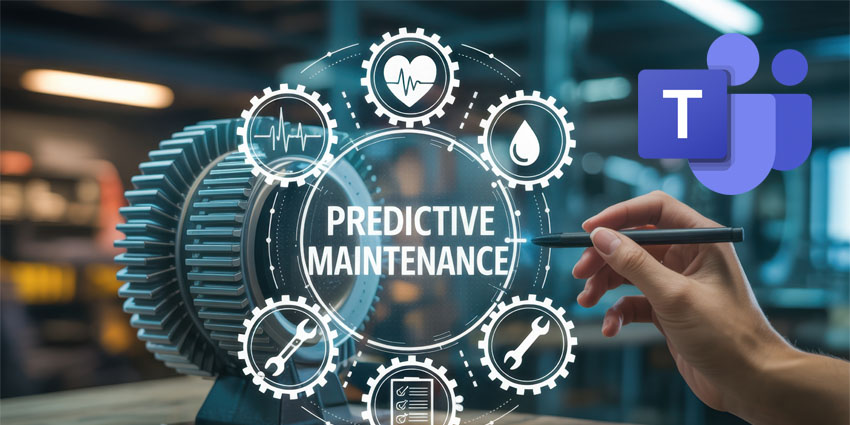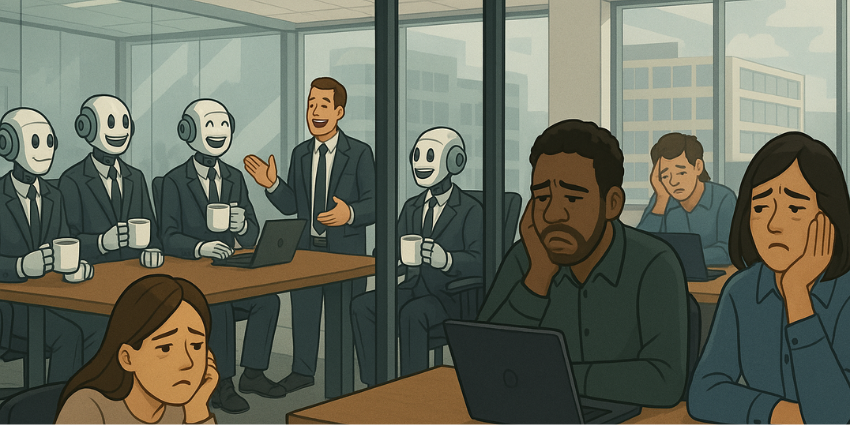When your name is affiliated with the longest-serving UK monarch in history, there’s a lot of pressure to deliver a royal experience.
That’s one of the underlying challenges for every employee at The Queen Elizabeth II Exhibition Centre, especially for Deborah Jones, AV/IT Sales Manager at the organisation. Jones and her team have to ensure a premium level of AV support for some of the biggest events, conferences and meetings in the country, including AGMs for prominent international businesses and the leadership hustings for the UK’s political parties.
Dealing with very important people often means both the setup and the staff supporting it need to be adaptable and expert. When the Centre redesigned its foyer space, for example, plenty of care went into making it look grand—not only in its aesthetics but also its AV infrastructure—because, as Jones put it, “that’s our waiting room for the nation”.
“Everybody else was centred on how it was going to look and the resolutions of screens and da-da-da,” Jones told UC Today. “I said, ‘I know you’re going to want to make a speech; what kind of PA system and what are we going to put in? We’ve got a video wall. What soundbars are we going to use? What audio are you going to put in, and how is it going to conflict with all that marble you’re putting down on the floor?'”
“Everybody said, ‘Oh, it’ll be fine. It’s not a meeting room; it’s a foyer. People are going to come in and hang their cloaks up.’ Lo and behold, the first thing we did was hold a party in the foyer.”
Surprise! An impromptu speech took place.
“Of course, the first thing everybody said was, ‘You’ve got to make a speech because this looks fantastic’,” Jones said. “We didn’t even know that they would work in that space. But obviously, we tested them. It’s really sound equipment. It hit the glass doors at the front. It went back so far. It looked and sounded fantastic. We were able to record from it. We made a highlights video of the whole thing, and the sound was perfect.”
That initiative to add leading audio equipment proved even more prescient once COVID-19 arrived—and with it, the advent of hybrid and remote working as the new normal.
“During COVID and hybrid, audio became really important because a lot of people weren’t keen on video,” Jones explained. “They were used to picking up the phone quite often, an analogue phone.”
“But as for going on to Teams and managing the audio and doing hybrid meetings, so you’d have all the directors giving their ‘share’ information from a studio, studio sound, using proper microphones, proper audio, people were absolutely no good at responding to that. Or their expectation was that it would be like a one-to-one, but of course, it was proper studio sound.”
“If you were Cora, you could run your annual general meeting from our place(…) you’ll find that most annual meetings and annual general meetings nowadays are a lot smaller. You still need sound, though, because guess what? You’ve got a thousand people online. At the end of the day, people don’t meet in the same way, and that’s how audio has evolved. It’s now got to be for the people in the room and for the wider audience outside.”
Jones’s Journey
Jones joined the community 30 years ago, starting off as a project manager but is now dealing with forward sales. “I still do shows,” she clarified, “but most of the time, I’m looking at introducing our team, introducing concepts, organising 3D visuals and animations, and discussing briefs.”
Jones has been a director at The AV User Group for 10 years, has an MBA, and holds the AVIXA Certified Technology Specialist (CTS) certification—she is the first woman in the UK to be awarded the certification.
That impressive CV underpins the extensive experience and expertise required to excel in her role, especially as being a tech leader for an institution as hallowed as the Queen Elizabeth II Centre often means donning a lot of hats. “As a government venue, I’m never quite sure whether I should say I’m in the live events industry, hospitality industry, or the government sector,” Jones said.
A Tech Stack Worthy Of Royalty
The tech stack Jones and her team deploy and manage is understandably comprehensive and varied, but Jones especially has a close relationship with collaboration tech business Sennheiser. “We’ve always used Sennheiser,” Jones explained. “We’re a Sennheiser house, and the people before me were using Sennheiser.
“We have 52 live event spaces,” Jones continued. “We have to have that reliability because you can’t turn around to your client in the middle of a press conference and say, ‘I’m very sorry, our kit’s gone down.’ It just isn’t plausible as a live events venue. Every live event venue will tell you that. That’s what Sennheiser offers us.”
“I would say we’ve grown with Sennheiser. We’ve got other equipment to complement it. We build our audio systems around the kit we bought from Sennheiser. We have large, medium, and small rooms. In the largest spaces, we use D&B, the Y-Series loudspeaker systems, and Yamaha QL5 desks.”
The tech ecosystem is extensive. For projection, the Centre uses Panasonic. For monitors, NEC. For switching, Analog Way. Lighting systems? Avalite Desks. “For the digital signage, we’re using OneLan, although we’re thinking we’re getting another server,” Jones explained. “For our IPTV, we use Xterity.”
On the microphone side, Jones and her team use hardwired, short-neck ME36s and then long-neck ME34s. They also use hardwired microphones on lecterns as backup on top tables, which Jones stresses is important for events like AGMs. There are racks in the main rooms which use the D6000 series for radios, mics and individual kits, both dual and single, to move them from room to room.
“We’re very, very interested in anything dedicated to live events because I think it is a particular sector,” Jones said. “But we’ve also got to have a workhorse that all our freelance community and full-time technicians can use. So we need to be able to bring in people, and the desk needs to be familiar, as do the microphones, as do every other part of the audio and data and lighting systems.”
In the smaller rooms, the Centre uses D&B, but it has a variety of other loudspeaker systems, including Bose. Jones outlines that they’re using Allen Heath desks in some of those rooms and recently purchased the CQ18, which has 18 inputs and 8 outputs and is “a really neat-looking desk”. It has six mixes plus LR stereo mixes, dual headset outputs for monitoring, auto-gain, auto-mix, and feedback reduction—”all the things that techs love”.
For small exhibition seminars, the Centre leverages silent headset systems for Voice of God. “One thing we’re starting to use it for is a caption mixer because, with accessibility, there’s much more of a need for captions,” Jones added. “We do captions in lots of different ways on the data side, but on the audio side, you’ve got to have both, really. You’ve got to have the audio and the captions.”
“That’s one of the attractions of this little bit of kit, the CQ18. Another thing we really like about it is that it has a built-in wireless access point for tablet control, like an iPad, and Bluetooth input as well.”
Lastly, is the Sennheiser LSP500. “I have to say that initially, they were really expensive, but they are wonderful,” Jones enthused. “We can use them in our foyer, where there are loads and loads of challenging surfaces, like the floor, marble, and walls. It isn’t built for audio equipment like that, for a portable audio kit, and it works perfectly in there, and it’s got the range. We’ve even used it outside. It’s really, really adaptable.”
The Centre needs to network floor to floor because, being a building in central London, floor space on one level is at a premium, and all of its rooms are stacked upon each other. Q-SYS’s system is critical to getting the digital audio from the fourth floor to the ground floor.
“It’s got a handheld microphone attached to it, but most of the time, it’s got playlists, and one of them is the Voice of God,” Jones said. “Another one is easy listening. We use control panels in each of those rooms to move it around.”
“We often have that on top of our Sennheiser systems. So, in the same space, we would do a proper rig with a rolling rack, that new desk, and all our Sennheiser mics. Then, in the same breath, we just turn on the music. We switch it around, turn it into reception, and put in a few uprights.
“The flexibility of the microphone system is crucial for us because we could be making a speech. Then, with the same system, in the same room, the next minute, we could be doing a hybrid stream, where we’ve got to think about delay, synchronisation, and latency. So, it’s a really, really adaptable system for us. To me, it’s got to have the groundwork behind it and the design.”
“That’s what Sennheiser gives us—all that research and development. Then, they just present us because they’ve listened. Maybe during an AV User Group or when you’re doing a roadmap for your product, they’ve listened and incorporated it. It’s always really gratifying.”
How Can AI Elevate Exhibition Centres’ AV?
Like most organisations across every industry, the Centre is experimenting with AI. What have they found to be the most useful use cases so far?
“For annual general meetings, we’re still using all our audio systems, and we’re using it for people in the room, but then we’ve got captioning underneath,” Jones said. “Accessibility has been a big driver of AI, and only for the better, and captioning is the key thing there. When you’re captioning and a live event is going on at the same time, the AI in your tracking cameras comes to the fore. You’re not just looking at it as an app that translates, interprets, or follows.”
The more responsive the camera is, the better the experience for the onlooker.
“What people don’t realise is not only has AI got involved in the tracking of the cameras, but it’s also dealing with the light; it’s also dealing with the recognition of that person leaving the room and coming back into it,” Jones highlighted. “It’s also dealing with all the menus on the kit. On the camera you might have a viewfinder with menus that have been put together better by an AI bot than a human being.”
“The speakers themselves have their speeches written in ChatGBT,” Jones added, “so AI is integrated into the whole audiovisual system, the whole process already, and people don’t even know it.”
Looking Ahead
With such a comprehensive tech stack covering an incredibly holistic range of responsibilities and duties, you might expect Jones to have a few technology pain points. However, the things that keep her up at night aren’t the technology but live events generally and those who enable them to run—a pertinent illustration that the best tech leaders understand that people are what’s most important, not the equipment.
“Our worst-case scenario is that we can’t get any people,” Jones said. “I mean, people in the live event industry, if you haven’t got an operator who knows his or her staff, you’re absolutely sunk.”
“There’s nothing like a good sound operative who can watch the people in the audience and know what’s going to happen. If you get a protester or something like that, they don’t need to grab the microphone; these days, they can amplify from their app. There are all sorts of things you can do to disrupt meetings. Our security comes to the fore then.”
“It’s always getting the right people,” Jones affirmed. “We’ve got huge CleverTouch work boards in all our offices, and they list the people, and we try and get people three months in advance for our events. We try and get our clients to sign off as early as possible.
“We can’t employ enough technicians at certain points of the year, so we rely on our freelancer community. We are reliant on the loyalty of our staff, and it must be everyone’s nightmare throughout the industry that we don’t have enough apprentices, that we don’t have enough training people, and I’m sure it keeps more than me up at night thinking about that.”
Jones is exploring areas around technology, though, including the aforementioned AI and its potentially transformative impact on accessibility. New mics are another because Jones and her team “constantly invest, especially on the sound side.”
“Because we’re in that area where we can take 1,200, 1,600, a lot of people in one space, you need to have a really good sound system for that,” Jones emphasised.
“You might have to electronically delay it in one room. It’s not like an arena where you’ve got nothing to hang anything from, and you’re using line arrays, but you’re doing rock and roll. It’s a different kind of scenario where we have much more control, but you still need the technology and the people to program it well because if everything goes well, nobody comments, and nobody thanks you. So you’ve kind of won it.”
“But if the sound goes wrong, you are dead in the water,” she continued. “That’s the only thing people will remember. They’ll remember the sound if it feeds back. We don’t like any sound feedback, and because we’re in Westminster, we often have a lot of press in, and we have people being interviewed. We did all the leadership elections, and you really need to rely on your microphones when you’re going out on broadcast channels.
Jones and her team are also investigating how broadcast is integrating with AV and rechargeable batteries. Sustainability is a massive issue at the forefront of everybody’s minds across our industry.
“Every time you go for an award, every time you have a client on-site, one of the first questions they ask is about sustainability,” Jones said. “It isn’t, ‘Does the program work?’ That’s a given. It’s, ‘How did you source it?’ It’s not just about technology. It’s about food. It’s about staging. It’s about everything all along the way.”
“So, I think that’s one thing that you’ll always improve on. We can improve battery life and recycle more effectively. I do think that’s where the industry is concentrating at the moment, and they’re doing a great job.”
“I’m a judge on the AV Awards, and it’s amazing the way our industry has stepped up to that. It’s truly impressive. It makes me proud to be part of the industry, actually, that there’s a whole field of research going on into how to be more sustainable in our industry and still give back in the same way that we always have.”







